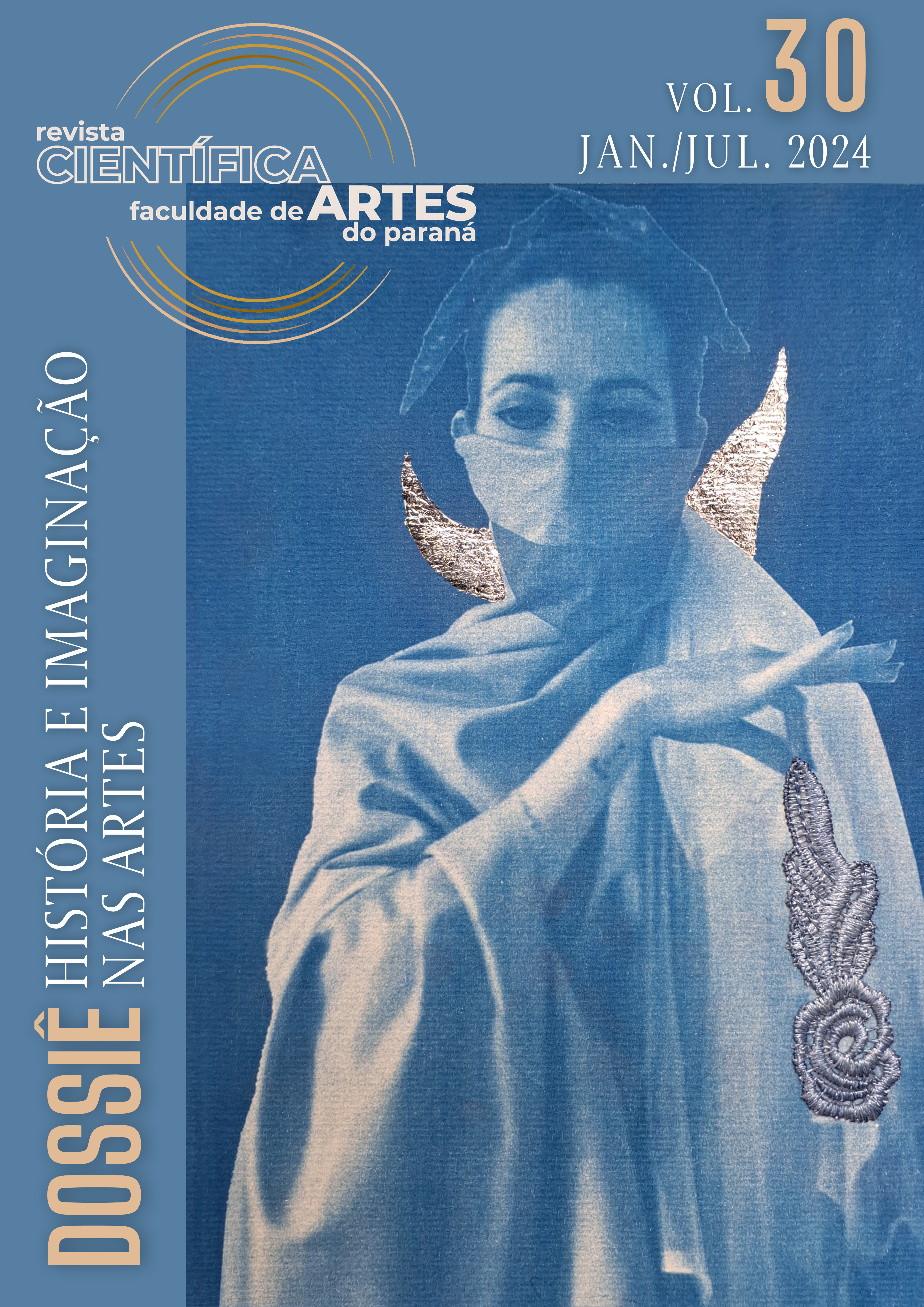The pictorial poetics of Charles Baudelaire
brief study of the imaginary of Le Spleen de Paris
DOI:
https://doi.org/10.33871/19805071.2024.30.1.8964Keywords:
Baudelaire, Le Spleen de Paris, Modernity, Poetic proseAbstract
By portraying modern life through poetic prose, Charles Baudelaire finds in painting one of his allies for the creation of scenes and narratives. Questioning the interfaces between literature, painting and society in Le Spleen de Paris, this article proposes to study the resources present in the poems “Le gâteau”, “Les yeux des pauvres”, “Le joujou des pauvres” and “Le vieux saltimbanque”, emphasizing the ambivalence that characterizes Baudelaire's modernity. Therefore, after reviewing the importance of painting in the poet's itinerary and the stylistic innovation of the studied work, a commentary is developed on the listed poems. From this analysis, it is suggested that Le Spleen de Paris constitutes both an aesthetic experimentation and a poetic and ambivalent reworking of reality.
Downloads
References
AUERBACH, Erich. As flores do mal e o sublime. In: ____. Ensaios de literatura ocidental: filologia e crítica. São Paulo: Duas Cidades; Ed. 34, 2007. p. 303-332.
BAUDELAIRE, Charles. Correspondance. Comentários de Claude Pichois e Jérôme Thélot. Paris: Gallimard, 2000.
BAUDELAIRE, Charles. Mon cœur mis à nu. Édition diplomatique établie par Claude Pichois. Genève: Droz, 2001.
BAUDELAIRE, Charles. Le spleen de Paris: Petits poèmes en prose. Paris: Librairie Générale Française, 2003.
BAUDELAIRE, Charles. Sobre a modernidade: o pintor da vida moderna. São Paulo: Paz e Terra, 2007.
BAUDELAIRE, Charles. Écrits sur l’art. Texto estabelecido, apresentado e anotado por Francis Moulinat. Paris: Librairie Génerale Française, 2010.
BAZIN, Germain. Barroco e Rococó. São Paulo: Martins Fontes, 1993.
BENJAMIN, Walter. Obras Escolhidas III — Charles Baudelaire: um lírico no auge do capitalismo. São Paulo: Brasiliense, 1991.
BENJAMIN, Walter. “Sobre alguns motivos na obra de Baudelaire”. In: ____. A modernidade. Lisboa: Assírio & Alvim, 2006. p.101-147.
BERLINCK, Luciana Chaui. Melancolia: rastros de dor e de perda. São Paulo: Humanitas; Associação de Acompanhamento Terapêutico, 2008.
CHEVALLIER, Philippe. “O Baudelaire de Foucault: uma silhueta furtiva e paradoxal”. Anuário de Literatura, v.18, n. 1, p. 190-197, 2013.
CROW, Thomas. Modern Art in the Common Culture. London: Yale University Press, 1998.
FOSTER, Hal. “Arquivos da arte moderna”. Arte e Ensaios, v. 19, n. 19, p. 182-193, 2009.
FOUCAULT, Michel. “O que são as Luzes?”. In: ____. Ditos e escritos — Vol. II: arqueologia das ciências e história dos sistemas de pensamento. Rio de Janeiro: Forense Universitária, 2000, p. 335-351.
GAGNEBIN, Jeanne Marie. “Baudelaire, Benjamin e o Moderno”. In: ____. Sete aulas sobre linguagem. São Paulo: Imago, 1997, p. 139-154.
LABARTHE, Patrick. Petits Poèmes en prose: Le Spleen de Paris de Charles Baudelaire. Paris: Éditions Gallimard, 2000.
LE PICHON, Yann; PICHOIS, Claude. Le musée retrouvé de Charles Baudelaire. Paris: Éditions Stock, 1992.
MACCHIA, Giovanni. Baudelaire. Milão: Rizzoli, 1975.
OEHLER, Dolf. Terrenos vulcânicos. São Paulo: Cosac & Naify, 2004.
OLIVEIRA, Juliana Michelli S. “Qual é a verdadeira? (de Charles Baudelaire): armadilhas da imitação e da criação na representação da realidade”. Magma, v. 13, p. 101-121, 2017. Disponível em: <https://doi.org/10.11606/issn.2448-1769.mag.2016.115168>. Acesso em: 19 abr. 2023.
PAZ, Octavio. Filhos do barro: do romantismo à vanguarda. São Paulo: Cosac Naify, 2013.
POMPEU, Caio Olivette. “Baudelaire: a modernidade e as várias faces do artista moderno”. Avesso: Pensamento, Memória e Sociedade, v. 2, n. 1, 2021.
SMITH, Ann Kennedy. Painted Poetry: Colour in Baudelaire’s Art Criticism. Bern: Peter Lang, 2011.
STAROBINSKI, Jean. A melancolia diante do espelho: Três leituras de Baudelaire. São Paulo: Editora 34, 2014.
VERNIER, France. Cidade e modernidade nas "flores do mal" de Baudelaire. ARS, v. 5, n. 10, p. 62-79, 2007.
Downloads
Published
How to Cite
Issue
Section
License
The authors retain the copyright, when licensing their production in Revista Científica/FAP, which is licensed under a Creative Commons license. When submitting the article, and upon acceptance, the author assigns his copyright for publication in that journal.
Readers can download, print and use the articles published in the journal, as long as there is always an explicit mention of the author (s) and the Revista Científica/FAP, no changes to the original work are allowed. When submitting an article to Revista Científica/FAP and after its being accepted for publication, the authors allow, without remuneration, to pass the following rights to the Journal: the first edition rights and the authorization for the editorial team to transfer, according to their judgment, this article and its metadata to indexing and reference services.


